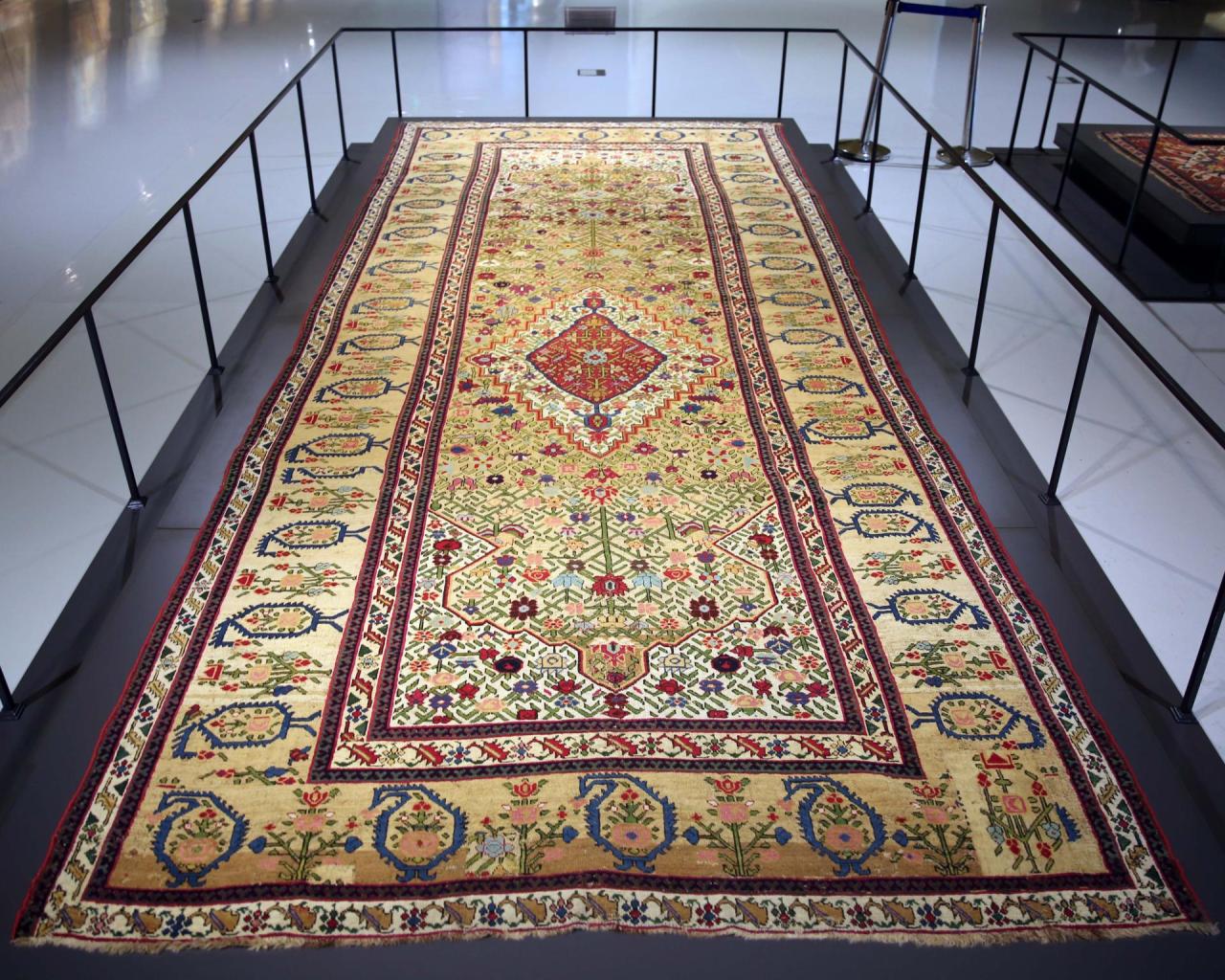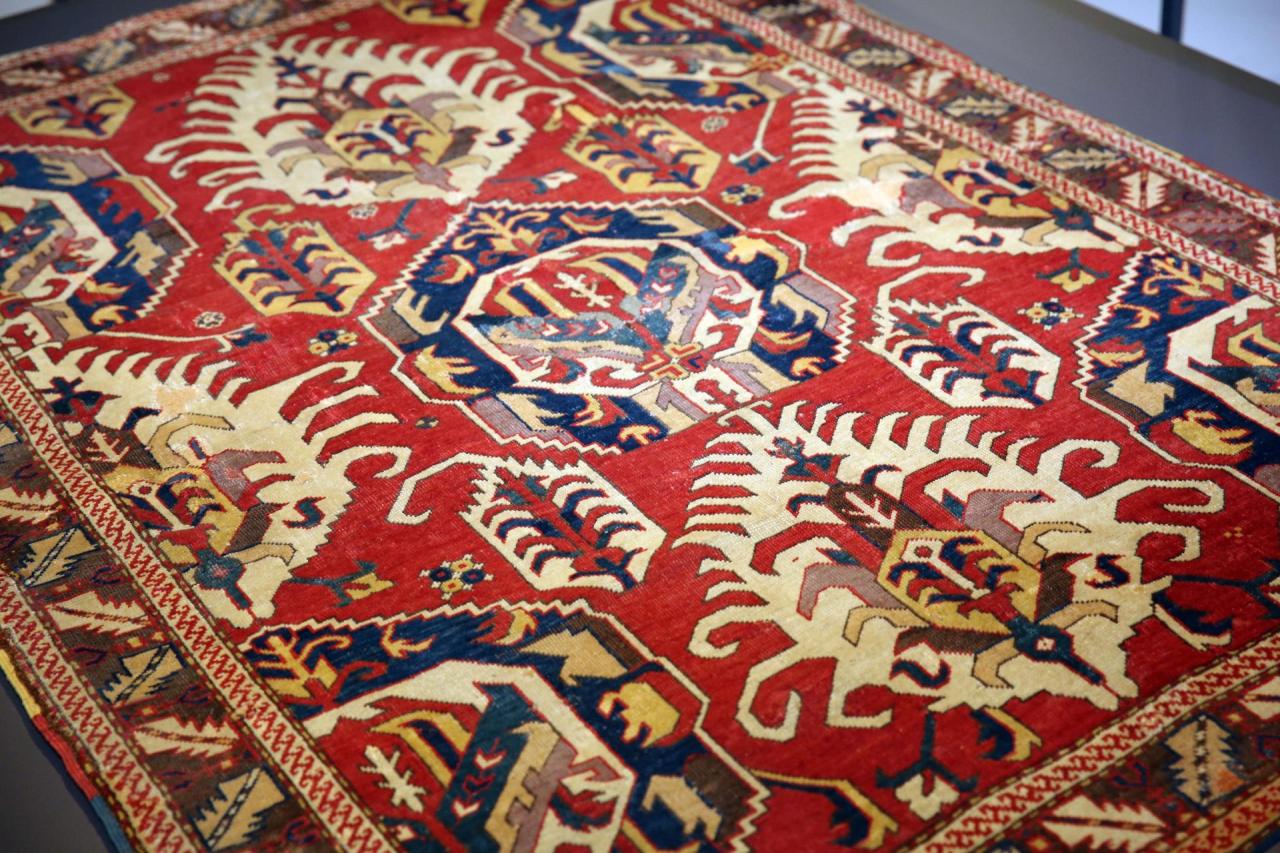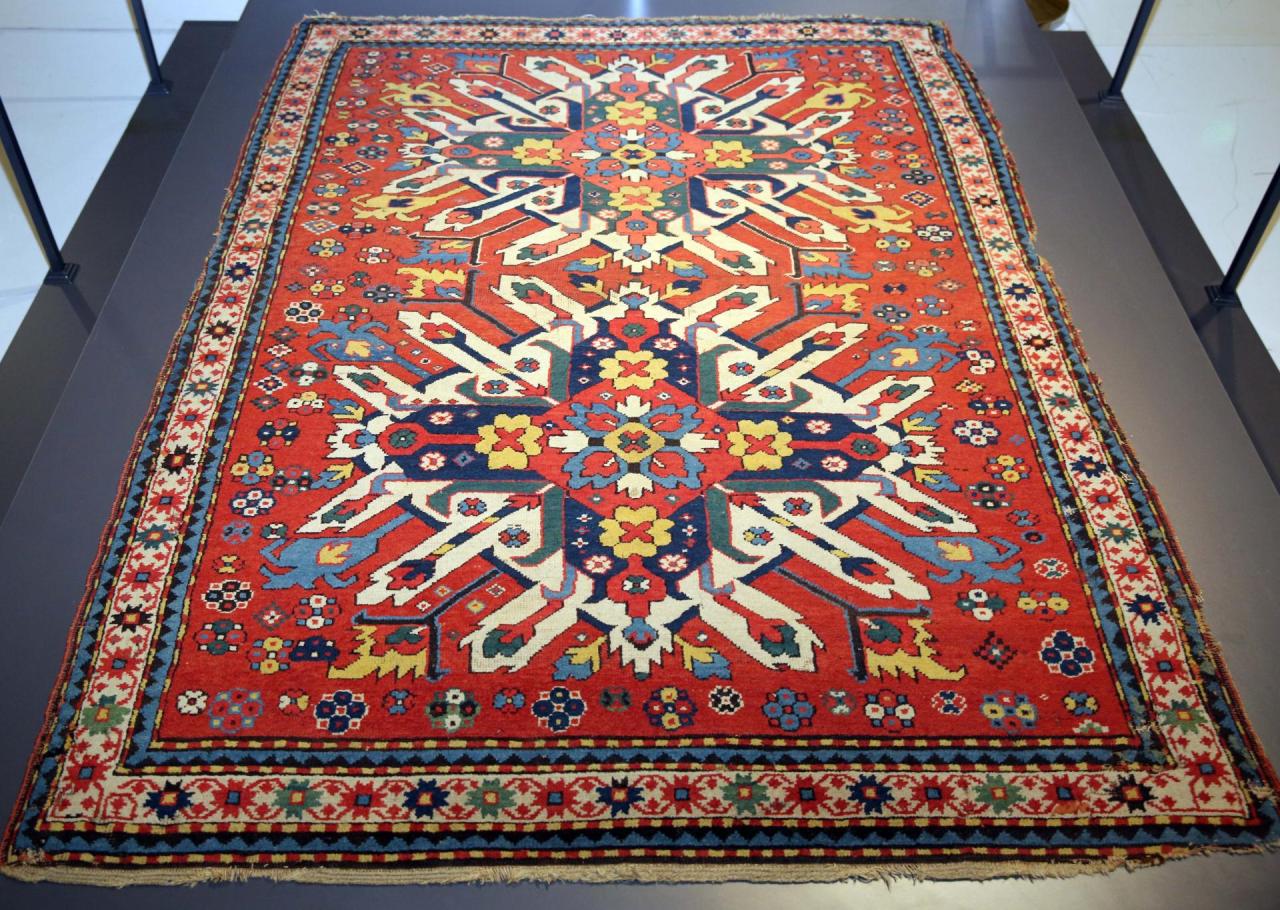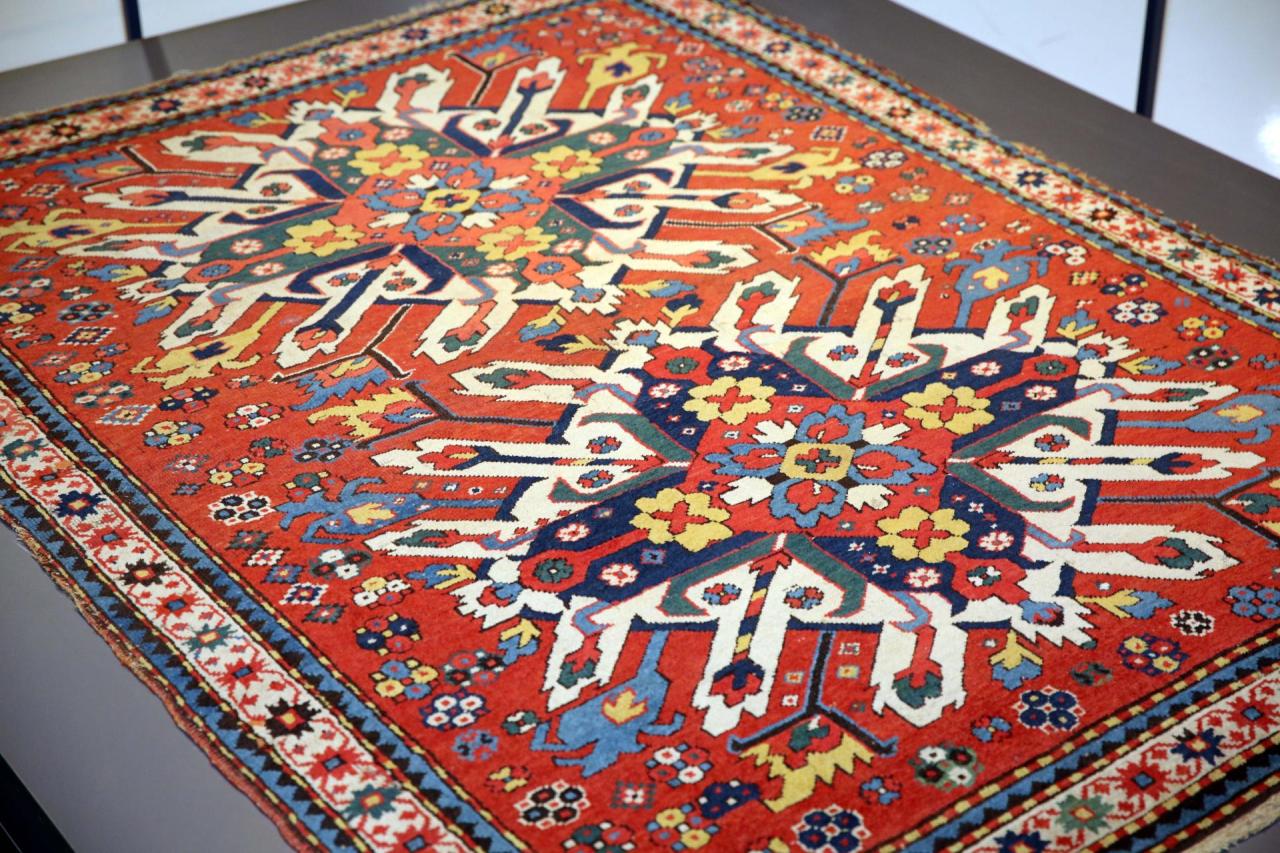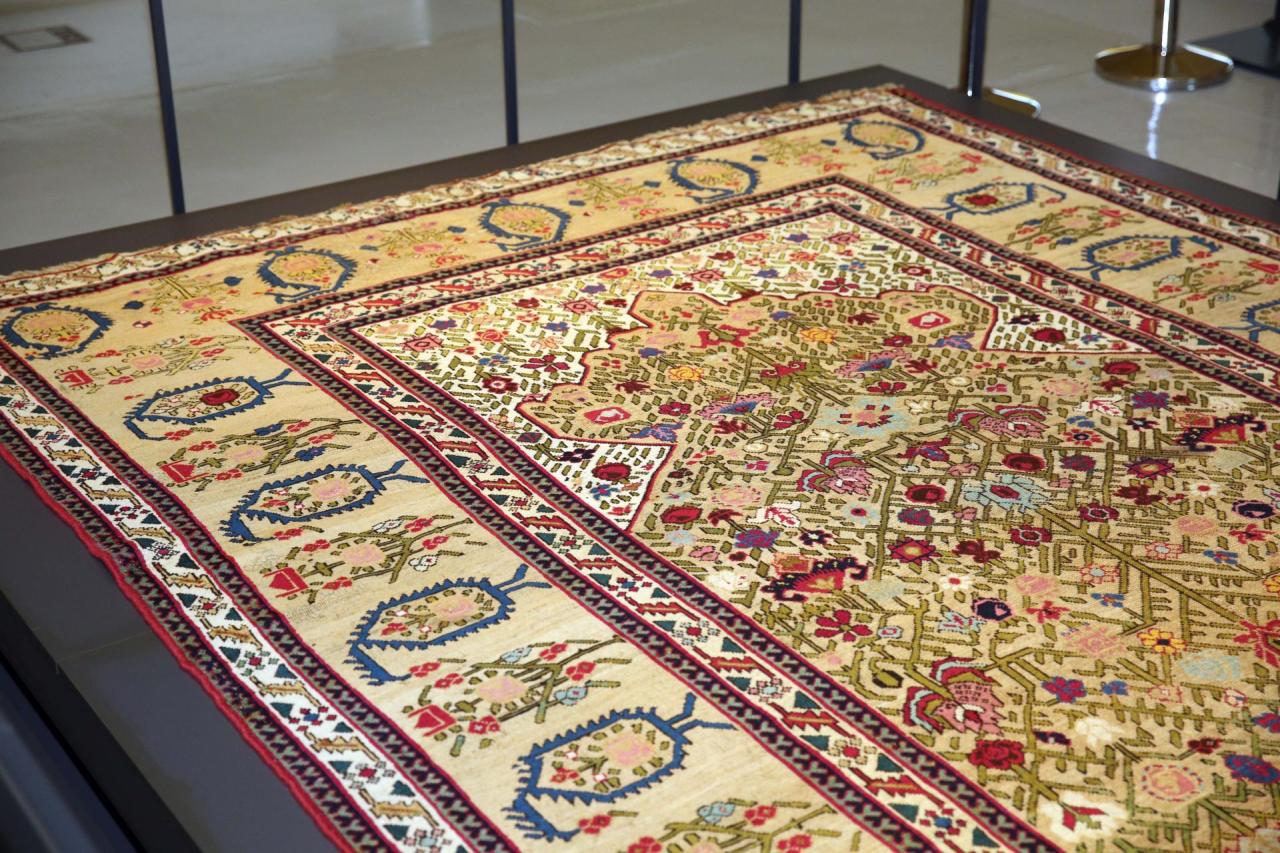Ancient carpets exhibited in Baku [PHOTO]
![Ancient carpets exhibited in Baku [PHOTO]](https://www.azernews.az/media/2019/07/12/louvrecarpets1.jpg)
By Laman Ismayilova
Azerbaijani carpets are renowned worldwide for their beautiful designs and inexhaustible richness of colors. The country has adopted the tradition of carpet weaving since the Bronze Age.
Azerbaijan Carpet Museum provides a wonderful journey to the history of carpet weaving art. It is a great place to familiarize yourself with the unique examples of the national carpets.
The exhibition "Azerbaijan Heritage in Louvre Museum" has opened its doors at the Azerbaijan Carpet Museum as part of the 43rd session of the UNESCO World Heritage Committee.
For the first time in Azerbaijan's cultural history, three rare exhibits from the world-known Louvre Museum’s permanent exhibition are presented in capital.
This exhibition in Baku marks the beginning of cooperation between the two museums, which will strengthen these ties and serve as an impetus for large-scale projects that will present samples of Azerbaijani national heritage.
The project showcases three Azerbaijani carpets-Chelebi, Khanlig and Ajdahali, woven in the 18th-20th centuries in Karabakh and Shirvan.
In her interview with Trend Life, director of the Azerbaijan Carpet Museum, Chairman of ICOM Azerbaijan, Ph.D. in Art History Shirin Melikova talked about this international exhibition project.
It all started in 2012. Azerbaijan and other Islamic countries, took direct part in the creation of the department of Islamic art at Louvre. With the support of the Heydar Aliyev Foundation, new halls dedicated to Islamic art were created in the world-famous museum.
"In subsequent years, during the trip of the head of the department of Islamic art of the Louvre to Azerbaijan and my trip to Paris in 2016, the drafts of the future project were determined. When it became known that the 43rd session of the UNESCO World Heritage Committee, scheduled for 2019, would be held in Baku, our museum made the Louvre a proposal for an exhibition of Azerbaijani carpets timed to this important UNESCO event," Melikova said.
The exhibits were selected by experts of the Louvre Museum. The Louvre provided the Carpet Museum with three valuable carpets - Ajdahali ( late 18th cent.), Khanlig (19th cent.) and Chelebi (late 19th - early 20th cent.).
Shirvan`s Ajdahali carpet amazes with the preserved brilliance of bright colors. Its patterns date back to the Safavid carpets, known as Shah Abbas and represent the ornament similar to palmette. This motif resembles the fan-shaped leaves of a palm tree.
In earlier versions of these carpets, a dragon was placed on the sides of the palmette. Later it was replaced by an ornament called dragon buta.
"Chelebi carpet dated to the end of the 19th - the beginning of the 20th century is equally beautifully preserved. It is the most famous carpet in the world; its various variations (with one, two and three medallions) are kept in major museums and private collections around the world. Often, carpets with this composition are exhibited at auctions and sold for big money," said Melikova.
"Chelebi or Barda carpets were woven in the villages of Karabakh, as well as in the village of Chelebiler, 10 km east of Barda. These carpets are associated with the ancient Sufi order, and the characteristic medallion is the symbol of this order, denoting the divine light. In earlier carpets, this medallion of vegetative character resembles a flower," she said.
The flower symbolized the sun, while its petals - the rays of the sun.
Last year we replenished the collection of our museum with the Nakhchivan carpet of the end of the 17th century, the center of which adorns the Chelebi medallion. In later carpets, the ornament becomes more geometric, stretched horizontally. The collection of our museum contains several variations of Chelebi carpets, one of which is on display with three medallions," she added.
Meanwhile, carpets from Louvre were woven in a professional workshop.
Speaking about the exhibition, Melikova stressed that the exhibition will draw attention of local and foreign carpet researchers to these Louvre exhibits.
"Of course, we hope that our first project with the Louvre will be the beginning of a long and successful cooperation and a whole series of joint projects, above all exhibition, but perhaps also scientific ones," she concluded.
The exhibition "Azerbaijan Heritage in Louvre Museum" will last until September 30.
The project is co-organized by the Azerbaijan Ministry of Culture, Azerbaijan Carpet Museum, Embassy of France in Azerbaijan, the Louvre Museum, French-Azerbaijani University and Silk Way West Airlines.
The exhibition is the Azerbaijan Carpet Museum's contribution to the implementation of the State Program for the Preservation and Development of Carpet Art in Azerbaijan for 2018–2022.
There are has seven carpet producing regions including Baku, Shirvan, Guba, Tabriz, Karabakh, Ganja and Gazakh and each of them had its own technology, typical patterns and colors.
According to their technical aspects, Azerbaijani carpets are classified as flat-woven (pileless) and knotted (pile). The flat-woven carpets are linked to the earlier period of carpet weaving. There are several kinds of pileless carpets such as Shadda, Verni, Jejim, Zilli, Sumakh, Kilim and Palas.
In 2010, the Azerbaijani carpet was proclaimed a Masterpiece of Intangible Heritage by UNESCO.
Ancient Azerbaijani carpets are stored at the White House, the U.S. State Department, and many other museums across the world, including the Metropolitan Museum of Art in New York, the Museum of Fine Arts in Boston, and the Museum of Art in Philadelphia, as well as the Victoria and Albert Museum in London and Hermitage in St. Petersburg.
The Azerbaijan Carpet Museum was created in 1967. The main purpose of the creation of the museum was to store, research, and demonstrate unique examples of the carpet weaving art, which are Azerbaijan’s national heritage.
The Carpet Museum has become a research-training and cultural-educational center where many events, such as exhibitions, international symposiums, and conferences, are held. During its years of existence, the museum has organized more than 30 exhibitions in different countries throughout the world.
In 2004, the law on the Preservation and Development of Azerbaijan Carpet was enacted with the museum’s participation. The law aims to implement the registration of Azerbaijani carpets, protect and support their development, and coordinate scientific and methodical training.
The 43rd session of the UNESCO World Heritage Committee was held in Baku from June 30 to July 10. During the Baku session of the Committee, 36 out of 42 proposals for inscribing on the World Heritage List were considered, including six natural, 28 cultural and two mixed (natural and cultural) monuments.
At the 43rd session, Historic center of Shaki with the Khans’ Palace, has been inscribed on UNESCO World Heritage List.
This became the third object of cultural heritage of Azerbaijan listed on the World Heritage List, after Icherisheher and Gobustan National Historical-Artistic Reserve.
---
Laman Ismayilova is AzerNews’ staff journalist, follow her on Twitter: @Lam_Ismayilova
Follow us on Twitter @AzerNewsAz
Here we are to serve you with news right now. It does not cost much, but worth your attention.
Choose to support open, independent, quality journalism and subscribe on a monthly basis.
By subscribing to our online newspaper, you can have full digital access to all news, analysis, and much more.
You can also follow AzerNEWS on Twitter @AzerNewsAz or Facebook @AzerNewsNewspaper
Thank you!

